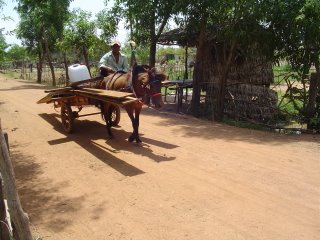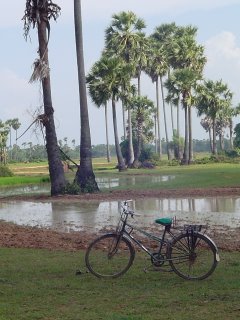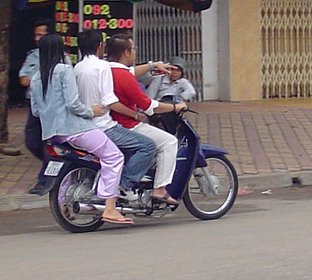
Well, just before Crossing Cambodia goes on a shortened summer monsoonal recess, let’s just look at the postings of the last few weeks.
Crossing Cambodia was quite surprised by the amount of additional information coming from the press / other web sites. Though these postings were either negative or cynical or both. Possibly, because the authors of these, like myself, are foreigners trying to understand the complexities of life in Phnom Penh. Comparing to situations already accustomed to is common and, yes, negotiating traffic in Phnom Penh is not so easy, to a certain degree it could be described as dangerous. Then again if compared with my previous posting in Lao, the speed of traffic here is less, so if an accident happens it’s not as serious. A second aspect of the press is the fact that of course the written press focuses on the weird / extra ordinary. That can be expected and as there seem to be no rules in Cambodian traffic, these articles exemplify the weirdness / out of here–ness one can expect when participating in Cambodian traffic.
Crossing Cambodia must admit that its own writings could also be interpreted as negative or cynical. Unless you are the owner of Humvee you tend to be at the receiving end of impoliteness / incorrect use of in western world written and unwritten traffic rules. Those of you familiar with Monivong Blvd. can relate of the countless near escapes from drivers weaving in and out of traffic at random. Crossing Cambodia’s closest shave the past month came on a local crossroad where a driver ignored a stop sign (yes there are signs) and nearly assisted this bloggers ascent into the other world! Never take something for granted.
But as said, Crossing Cambodia believes that the way traffic conducts itself is a fair reflection of the society: Cambodia seems to be lawless, not that many rules, other than the strongest wins and policing of the few rules is non-existent. An illustration from Cambodian society the last month: evictions of inhabitants by the government to subside private business was certainly one a major political issue the last month. The evictees were hardly compensated whereas the government / private sector (divide not clear) stands to gain handsome profits. Justice?
Then again, there were some soundbytes from prominent politicians (incl. Hun Sen) seeing the necessity for more traffic safety. Ultimately, this is the role of politicians: to protect their citizens. In traffic, especially in Cambodia, increasing safety in this stage hardly costs nothing. What Crossing Cambodia would have to look into is how rules are applied.
Finally, to end this posting on a positive note, a photo of a lone bicycle in Stoeng district, Kampong Thom province. The owner, hard at work transplanting the rice. The brief sojourn / escape from Phnom Penh opens ones perspectives. The rush hour in Kampong Thom still needs to develop itself. Where were all those big SUV’s? Stuck in Phnom Penh? Crossing Cambodia, Cambodia still developing.


